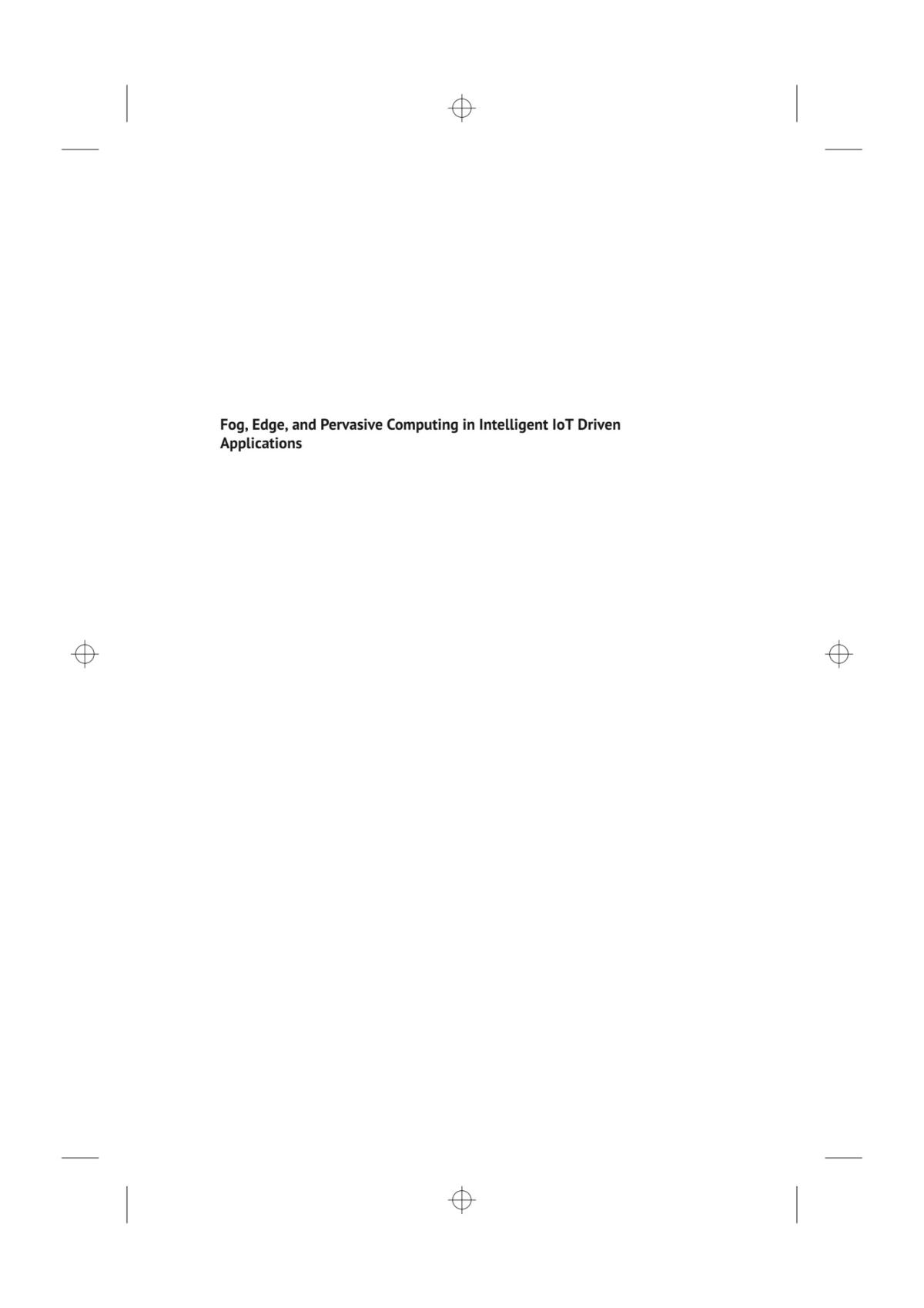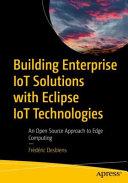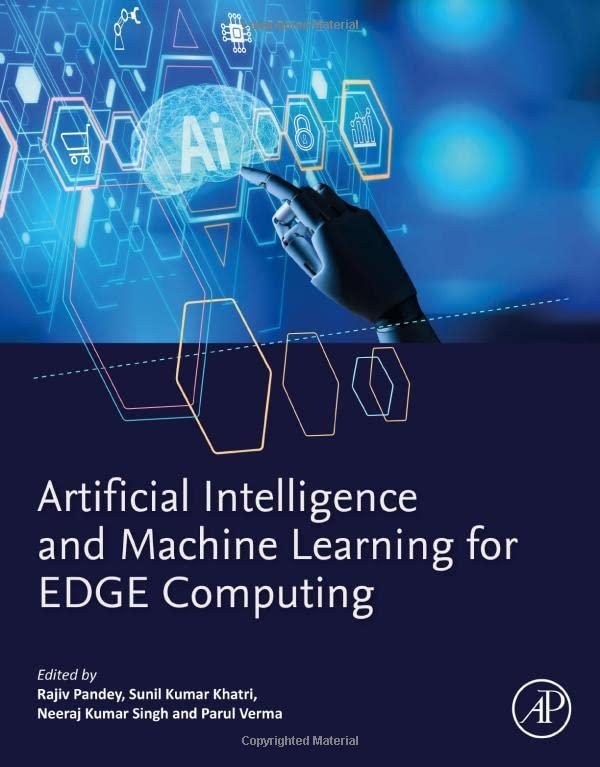Fog,Edge,andPervasiveComputingin
IntelligentIoTDrivenApplications
Editedby DeepakGupta AdityaKhamparia
Copyright©2021byTheInstituteofElectricalandElectronicsEngineers,Inc.Allrights reserved.
PublishedbyJohnWiley&Sons,Inc.,Hoboken,NewJersey. PublishedsimultaneouslyinCanada.
Nopartofthispublicationmaybereproduced,storedinaretrievalsystem,ortransmittedinany formorbyanymeans,electronic,mechanical,photocopying,recording,scanning,orotherwise, exceptaspermittedunderSection107or108ofthe1976UnitedStatesCopyrightAct,without eitherthepriorwrittenpermissionofthePublisher,orauthorizationthroughpaymentofthe appropriateper-copyfeetotheCopyrightClearanceCenter,Inc.,222RosewoodDrive,Danvers, MA01923,(978)750-8400,fax(978)750-4470,oronthewebatwww.copyright.com.Requeststo thePublisherforpermissionshouldbeaddressedtothePermissionsDepartment,JohnWiley& Sons,Inc.,111RiverStreet,Hoboken,NJ07030,(201)748-6011,fax(201)748-6008,oronlineat http://www.wiley.com/go/permission.
LimitofLiability/DisclaimerofWarranty:Whilethepublisherandauthorhaveusedtheirbest effortsinpreparingthisbook,theymakenorepresentationsorwarrantieswithrespecttothe accuracyorcompletenessofthecontentsofthisbookandspecificallydisclaimanyimplied warrantiesofmerchantabilityorfitnessforaparticularpurpose.Nowarrantymaybecreatedor extendedbysalesrepresentativesorwrittensalesmaterials.Theadviceandstrategiescontained hereinmaynotbesuitableforyoursituation.Youshouldconsultwithaprofessionalwhere appropriate.Neitherthepublishernorauthorshallbeliableforanylossofprofitoranyother commercialdamages,includingbutnotlimitedtospecial,incidental,consequential,orother damages.
Forgeneralinformationonourotherproductsandservicesorfortechnicalsupport,please contactourCustomerCareDepartmentwithintheUnitedStatesat(800)762-2974,outsidethe UnitedStatesat(317)572-3993orfax(317)572-4002.
Wileyalsopublishesitsbooksinavarietyofelectronicformats.Somecontentthatappearsin printmaynotbeavailableinelectronicformats.FormoreinformationaboutWileyproducts, visitourwebsiteatwww.wiley.com.
LibraryofCongressCataloging-in-PublicationData
Names:Gupta,Deepak,editor.|Khamparia,Aditya,1988-editor.
Title:Fog,edge,andpervasivecomputinginintelligentIoTdriven applications/editedbyDeepakGupta,AdityaKhamparia.
Description:Hoboken,NewJersey:Wiley-IEEEPress,2020.|Includes bibliographicalreferencesandindex.|Descriptionbasedonprintversion recordandCIPdataprovidedbypublisher;resourcenotviewed.
Identifiers:LCCN2020025436(print)|LCCN2020025437(ebook)|ISBN 9781119670100(epub)|ISBN9781119670094(adobepdf)|ISBN9781119670070 (hardback)|ISBN9781119670070q(hardback)|ISBN9781119670094q(adobe pdf)|ISBN9781119670100q(epub)
Subjects:LCSH:Internetofthings.|Cloudcomputing.|Distributed databases.|UbIquitouscomputing.
Classification:LCCTK5105.8857(ebook)|LCCTK5105.8857.F642020(print)| DDC004.67/8–dc23
LCrecordavailableathttps://lccn.loc.gov/2020025436LCrecordavailableathttps://lccn.loc .gov/2020025437
CoverDesign:Wiley
CoverImage:©AndriyOnufriyenko/GettyImages
Setin9.5/12.5ptSTIXTwoTextbySPiGlobal,Chennai,India
PrintedintheUnitedStatesofAmerica 10987654321
Contents
AbouttheEditors xvii
ListofContributors xix
Preface xxv Acknowledgments xxxiii
1Fog,EdgeandPervasiveComputinginIntelligentInternetof ThingsDrivenApplicationsinHealthcare:Challenges, LimitationsandFutureUse 1
AfrojAlam,SaharQazi,NaiyarIqbal,andKhalidRaza
1.1Introduction 1
1.2WhyFog,Edge,andPervasiveComputing? 3
1.3TechnologiesRelatedtoFogandEdgeComputing 6
1.4ConceptofIntelligentIoTApplicationinSmart(Fog)Computing Era 9
1.5TheHierarchicalArchitectureofFog/EdgeComputing 12
1.6ApplicationsofFog,EdgeandPervasiveComputinginIoT-based Healthcare 15
1.7Issues,Challenges,andOpportunity 17
1.7.1SecurityandPrivacyIssues 18
1.7.2ResourceManagement 19
1.7.3ProgrammingPlatform 19
1.8Conclusion 20 Bibliography 20
2FutureOpportunisticFog/EdgeComputationalModelsand theirLimitations 27 SoniaSingla,NaveenKumarBhati,andS.Aswath
2.1Introduction 28
2.2WhataretheBenefitsofEdgeandFogComputingfortheMechanical WebofThings(IoT)? 32
2.3Disadvantages 34
2.4Challenges 34
2.5RoleinHealthCare 35
2.6BlockchainandFog,EdgeComputing 38
2.7HowBlockchainwillIlluminateHumanServicesIssues 40
2.8UsesofBlockchainintheFuture 41
2.9UsesofBlockchaininHealthCare 42
2.10EdgeComputingSegmentalAnalysis 42
2.11UsesofFogComputing 43
2.12AnalyticsinFogComputing 44
2.13Conclusion 44
Bibliography 44
3AutomatingElicitationTechniqueSelectionusingMachine Learning 47
HatimM.ElhassanIbrahimDafallaa,NazirAhmad,MohammedBurhanur Rehman,IqrarAhmad,andRizwankhan
3.1Introduction 47
3.2RelatedWork 48
3.3Model:RequirementElicitationTechniqueSelectionModel 52
3.3.1DeterminingKeyAttributes 54
3.3.2SelectionAttributes 54
3.3.2.1AnalystExperience 55
3.3.2.2NumberofStakeholders 55
3.3.2.3TechniqueTime 56
3.3.2.4LevelofInformation 56
3.3.3SelectionAttributesDataset 56
3.3.3.1MappingtheSelectionAttributes 57
3.3.4 k-nearestNeighborAlgorithmApplication 57
3.4AnalysisandResults 60
3.5TheErrorRate 61
3.6Validation 61
3.6.1DiscussionoftheResultsoftheExperiment 62
3.7Conclusion 62
Bibliography 65
4MachineLearningFrameworksandAlgorithmsforFogand EdgeComputing 67
MuraliMallikarjunaRaoPerumalla,SanjayKumarSingh,Aditya Khamparia,AnjaliGoyal,andAshishMishra
4.1Introduction 68
4.1.1FogComputingandEdgeComputing 68
4.1.2PervasiveComputing 68
4.2OverviewofMachineLearningFrameworksforFogandEdge Computing 69
4.2.1TensorFlow 69
4.2.2Keras 70
4.2.3PyTorch 70
4.2.4TensorFlowLite 70
4.2.4.1UsePre-trainModels 70
4.2.4.2ConverttheModel 70
4.2.4.3On-deviceInference 71
4.2.4.4ModelOptimization 71
4.2.5MachineLearningandDeepLearningTechniques 71
4.2.5.1Supervised,UnsupervisedandReinforcementLearning 71
4.2.5.2MachineLearning,DeepLearningTechniques 72
4.2.5.3DeepLearningTechniques 75
4.2.5.4EfficientDeepLearningAlgorithmsforInference 77
4.2.6ProsandConsofMLAlgorithmsforFogandEdgeComputing 78
4.2.6.1AdvantagesusingMLAlgorithms 78
4.2.6.2DisadvantagesofusingMLAlgorithms 79
4.2.7HybridMLModelforSmartIoTApplications 79
4.2.7.1Multi-TaskLearning 79
4.2.7.2EnsembleLearning 80
4.2.8PossibleApplicationsinFogErausingMachineLearning 81
4.2.8.1ComputerVision 81
4.2.8.2ML-AssistedHealthcareMonitoringSystem 81
4.2.8.3SmartHomes 81
4.2.8.4BehaviorAnalyses 82
4.2.8.5MonitoringinRemoteAreasandIndustries 82
4.2.8.6Self-DrivingCars 82 Bibliography 82
5IntegratedCloudBasedLibraryManagementinIntelligent IoTdrivenApplications 85 MdRobiulAlamRobel,SubratoBharati,PrajoyPodder,andM.Rubaiyat HossainMondal
5.1Introduction 86
5.1.1ExecutionPlanfortheMobileApplication 86
5.1.2MainContribution 86
5.2UnderstandingLibraryManagement 87
5.3IntegrationofMobilePlatformwiththePhysicalLibrary-Brief Concept 88
5.4Database(CloudBased)-AMusthaveComponentforLibrary Automation 88
5.5IoTDrivenMobileBasedLibraryManagement-GeneralConcept 89
5.6IoTInvolvedRealTimeGUI(CrossPlatform)AvailabletoUser 93
5.7IoTChallenges 98
5.7.1InfrastructureChallenges 99
5.7.2SecurityChallenges 99
5.7.3SocietalChallenges 100
5.7.4CommercialChallenges 101
5.8Conclusion 102 Bibliography 104
6ASystematicandStructuredReviewofIntelligentSystems forDiagnosisofRenalCancer 105 Nikita,HarshSadawarti,BalwinderKaur,andJimmySingla
6.1Introduction 106
6.2RelatedWorks 107
6.3Conclusion 119 Bibliography 119
7LocationDrivenEdgeAssistedDeviceandSolutionsfor IntelligentTransportation 123 SaravjeetSinghandJaitegSingh
7.1IntroductiontoFogandEdgeComputing 124
7.1.1NeedforFogandEdgeComputing 124
7.1.2FogComputing 125
7.1.2.1ApplicationAreasofFogComputing 125
7.1.3EdgeComputing 126
7.1.3.1AdvantagesofEdgeComputing 127
7.1.3.2ApplicationAreasofFogComputing 129
7.2IntroductiontoTransportationSystem 129
7.3RouteFindingProcess 131
7.3.1ChallengesAssociatedwithLandNavigationandRouting Process 132
7.4EdgeArchitectureforRouteFinding 133
7.5TechniqueUsed 135
7.6AlgorithmsUsedfortheLocationIdentificationandRouteFinding Process 137
7.6.1LocationIdentification 137
7.6.2PathGenerationTechnique 138
7.7ResultsandDiscussions 140
7.7.1Output 140
7.7.2BenefitsofEdge-basedRouting 143
7.8Conclusion 145 Bibliography 146
8DesignandSimulationofMEMSforAutomobileCondition MonitoringUsingCOMSOLMultiphysicsSimulator 149 NatashaTiwari,AnilKumar,PallaviAsthana,SumitaMishra,andBramah Hazela
8.1Introduction 149
8.2RelatedWork 151
8.3VehicleConditionMonitoringthroughAcousticEmission 151
8.4Piezo-resistiveMicroElectromechanicalSensorsforMonitoringthe FaultsThroughAE 152
8.5DesigningofMEMSensor 153
8.6ExperimentalSetup 153
8.6.1FFTAnalysisofAutomotiveDieselEngineSoundRecordingusing MATLAB 155
8.6.2DesignofMEMSSensorusingCOMSOLMultiphysics 155
8.6.3ElectrostaticStudyStepsfortheOptimizedTri-plateComb Structure 156
8.7ResultandDiscussions 157
8.8Conclusion 158 Bibliography 158
9IoTDrivenHealthcareMonitoringSystem 161 MdRobiulAlamRobel,SubratoBharati,PrajoyPodder,andM.Rubaiyat HossainMondal
9.1Introduction 161
9.1.1ComplementaryAspectsofCloudIoTinHealthcareApplications 162
9.1.2MainContribution 164
9.2GeneralConceptforIoTBasedHealthcareSystem 164
9.3ViewoftheOverallIoTHealthcareSystem-TiersExplained 165
9.4ABriefDesignoftheIoTHealthcareArchitecture-individualBlock Explanation 166
9.5Models/FrameworksforIoTuseinHealthcare 168
9.6IoTe-HealthSystemModel 171
9.7ProcessFlowfortheOverallModel 172
9.8Conclusion 173 Bibliography 175
x Contents
10FogComputingasFuturePerspectiveinVehicularAdhoc Networks 177 HarjitSingh,Dr.VijayLaxmi,Dr.ArunMalik,andDr.Isha
10.1Introduction 178
10.2FutureVANET:PrimaryIssuesandSpecifications 180
10.3FogComputing 181
10.3.1FogComputingConcept 183
10.3.2FogTechnologyCharacterization 183
10.4RelatedWorksinCloudandFogComputing 185
10.5FogandCloudComputing-basedTechnologyApplicationsin VANET 186
10.6ChallengesofFogComputinginVANET 188
10.7IssuesofFogComputinginVANET 189
10.8Conclusion 190 Bibliography 191
11AnOverviewtoDesignanEfficientandSecureFog-assisted DataCollectionMethodintheInternetofThings 193 Sofia,ArunMalik,Isha,andAdityaKhamparia
11.1Introduction 193
11.2RelatedWorks 194
11.3OverviewoftheChapter 196
11.4DataCollectionintheIoT 197
11.5FogComputing 197
11.5.1WhyfogComputingforDataCollectioninIoT? 197
11.5.2ArchitectureofFogComputing 200
11.5.3FeaturesofFogComputing 200
11.5.4ThreatsofFogComputing 202
11.5.5ApplicationsofFogComputingwiththeIoT 203
11.6RequirementsforDesigningaDataCollectionMethod 204
11.7Conclusion 206 Bibliography 206
12RoleofFogComputingPlatforminAnalyticsofInternetof Things-Issues,ChallengesandOpportunities 209 MamoonRashidandUmerIqbalWani
12.1IntroductiontoFogComputing 209
12.1.1HierarchicalFogComputingArchitecture 210
12.1.2LayeredFogComputingArchitecture 212
12.1.3ComparisonofFogandCloudComputing 213
12.2IntroductiontoInternetofThings 214
12.2.1OverviewofInternetofThings 214
12.3ConceptualArchitectureofInternetofThings 216
12.4RelationshipbetweenInternetofThingsandFogComputing 217
12.5UseofFogAnalyticsinInternetofThings 218
12.6Conclusion 218
Bibliography 218
13AMedicalDiagnosisofUrethralStrictureUsingIntuitionistic FuzzySets 221
PrabjotKaurandMariaJamal
13.1Introduction 221
13.2Preliminaries 223
13.2.1Introduction 223
13.2.2FuzzySets 223
13.2.3IntuitionisticFuzzySets 224
13.2.4IntuitionisticFuzzyRelation 224
13.2.5Max-Min-MaxComposition 224
13.2.6LinguisticVariable 224
13.2.7DistanceMeasureInIntuitionisticFuzzySets 224
13.2.7.1TheHammingDistance 224
13.2.7.2NormalizedHammingDistance 224
13.2.7.3ComplimentofanIntuitionisticFuzzySetMatrix 225
13.2.7.4RevisedMax-MinAverageCompositionofAandB(A Φ B) 225
13.3Max-Min-MaxAlgorithmforDiseaseDiagnosis 225
13.4CaseStudy 226
13.5IntuitionisticFuzzyMax-MinAverageAlgorithmforDisease Diagnosis 227
13.6Result 228
13.7CodeforCalculation 229
13.8Conclusion 233
13.9Acknowledgement 234 Bibliography 234
14SecurityAttacksinInternetofThings 237 RajitNair,PreetiSharma,andDileepKumarSingh
14.1Introduction 238
14.2ReferenceModelofInternetofThings(IoT) 238
14.3IoTCommunicationProtocol 246
14.4IoTSecurity 247
14.4.1PhysicalAttack 248
14.4.2NetworkAttack 252
14.4.3SoftwareAttack 254
14.4.4EncryptionAttack 255
14.5SecurityChallengesinIoT 256
14.5.1CryptographicStrategies 256
14.5.2KeyAdministration 256
14.5.3DenialofService 256
14.5.4AuthenticationandAccessControl 257
14.6Conclusion 257 Bibliography 257
15FogIntegratedNovelArchitectureforTelehealthServices withSwiftMedicalDelivery 263
InderpreetKaur,KamaljitSinghSaini,andJaitegSinghKhaira
15.1Introduction 264
15.2AssociatedWorkandDimensions 266
15.3NeedofSecurityinTelemedicineDomainandInternetofThings (IoT) 267
15.3.1AnalyticsReports 268
15.4FogIntegratedArchitectureforTelehealthDelivery 268
15.5ResearchDimensions 269
15.5.1BenchmarkDatasets 269
15.6ResearchMethodologyandImplementationonSoftwareDefined Networking 270
15.6.1KeyToolsandFrameworksforIoT,FogComputingandEdge Computing 274
15.6.2SimulationAnalysis 276
15.7Conclusion 282 Bibliography 282
16FruitFlyOptimizationAlgorithmforIntelligentIoT Applications 287
SatinderSinghMohar,SoniaGoyal,andRanjitKaur
16.1AnIntroductiontotheInternetofThings 287
16.2BackgroundoftheIoT 288
16.2.1EvolutionoftheIoT 288
16.2.2ElementsInvolvedinIoTCommunication 288
16.3ApplicationsoftheIoT 289
16.3.1Industrial 290
16.3.2SmartParking 290
16.3.3HealthCare 290
16.3.4SmartOfficesandHomes 290
16.3.5AugmentMaps 291
16.3.6EnvironmentMonitoring 291
16.3.7Agriculture 291
16.4ChallengesintheIoT 291
16.4.1AddressingSchemes 291
16.4.2EnergyConsumption 292
16.4.3TransmissionMedia 292
16.4.4Security 292
16.4.5QualityofService(QoS) 292
16.5IntroductiontoOptimization 293
16.6ClassificationofOptimizationAlgorithms 293
16.6.1ParticleSwarmOptimization(PSO)Algorithm 293
16.6.2GeneticAlgorithms 294
16.6.3HeuristicAlgorithms 294
16.6.4Bio-inspiredAlgorithms 294
16.6.5EvolutionaryAlgorithms(EA) 294
16.7NetworkOptimizationandIoT 295
16.8NetworkParametersoptimizedbyDifferentOptimization Algorithms 295
16.8.1LoadBalancing 295
16.8.2MaximizingNetworkLifetime 295
16.8.3LinkFailureManagement 296
16.8.4QualityoftheLink 296
16.8.5EnergyEfficiency 296
16.8.6NodeDeployment 296
16.9FruitFlyOptimizationAlgorithm 297
16.9.1StepsInvolvedinFOA 297
16.9.2FlowChartofFruitFlyOptimizationAlgorithm 298
16.10ApplicabilityofFOAinIoTApplications 300
16.10.1CloudServiceDistributioninFogComputing 300
16.10.2ClusterHeadSelectioninIoT 300
16.10.3LoadBalancinginIoT 300
16.10.4QualityofServiceinWebServices 300
16.10.5ElectronicsHealthRecordsinCloudComputing 301
16.10.6IntrusionDetectionSysteminNetwork 301
16.10.7NodeCaptureAttackinWSN 301
16.10.8NodeDeploymentinWSN 302
16.11NodeDeploymentUsingFruitFlyOptimizationAlgorithm 302
16.12Conclusion 304 Bibliography 304
17OptimizationTechniquesforIntelligentIoT
Applications 311
PriyankaPattnaik,SubhashreeMishra,andBhabaniShankarPrasad Mishra
17.1CuckooSearch 312
17.1.1IntroductiontoCuckoo 312
17.1.2NaturalCuckoo 312
17.1.3ArtificialCuckooSearch 313
17.1.4CuckooSearchAlgorithm 313
17.1.5CuckooSearchVariants 314
17.1.6DiscreteCuckooSearch 314
17.1.7BinaryCuckooSearch 314
17.1.8ChaoticCuckooSearch 316
17.1.9ParallelCuckooSearch 317
17.1.10ApplicationofCuckooSearch 317
17.2GlowWormAlgorithm 317
17.2.1IntroductiontoGlowWorm 317
17.2.2GlowWormSwarmOptimizationAlgorithm(GSO) 317
17.3WaspSwarmOptimization 321
17.3.1IntroductiontoWaspSwarmandWaspSwarmAlgorithm(WSO) 321
17.3.2FishSwarmOptimization(FSO) 322
17.3.3FruitFlyOptimization(FLO) 322
17.3.4CockroachSwarmOptimization 324
17.3.5BumblebeeAlgorithm 324
17.3.6DolphinEcholocation 325
17.3.7ShuffledFrog-leapingAlgorithm 326
17.3.8PaddyFieldAlgorithm 327
17.4RealWorldApplicationsArea 328
Summary 329 Bibliography 329
18OptimizationTechniquesforIntelligentIoTApplicationsin TransportProcesses 333 MuzaferSaraˇcevi ´ c,ZoranLonˇcarevi ´ c,andAdnanHasanovi ´ c
18.1Introduction 333
18.2RelatedWorks 335
18.3TSPOptimizationTechniques 336
18.4ImplementationandTestingofProposedSolution 338
18.5ExperimentalResults 342
18.5.1ExampleTestwith50Cities 343
18.5.2ExampleTestwith100Cities 344
18.6ConclusionandFurtherWorks 346 Bibliography 347
19RoleofIntelligentIOTApplicationsinFogparadigm:Issues, ChallengesandFutureOpportunities 351
PriyankaRajanKumarandSoniaGoel
19.1FogComputing 352
19.1.1NeedofFogcomputing 352
19.1.2ArchitectureofFogComputing 353
19.1.3FogComputingReferenceArchitecture 354
19.1.4ProcessingonFog 355
19.2ConceptofIntelligentIoTApplicationsinSmartComputingEra 355
19.3ComponentsofEdgeandFogDrivenAlgorithm 356
19.4WorkingofEdgeandFogDrivenAlgorithms 357
19.5FutureOpportunisticFog/EdgeComputationalModels 360
19.5.1FutureOpportunisticTechniques 361
19.6ChallengesofFogComputingforIntelligentIoTApplications 361
19.7ApplicationsofCloudBasedComputingforSmartDevices 363 Bibliography 364
20SecurityandPrivacyIssuesinFog/Edge/Pervasive Computing 369
ShwetaKaushikandCharuGandhi
20.1IntroductiontoDataSecurityandPrivacyinFogComputing 370
20.2DataProtection/Security 375
20.3GreatSecurityPracticesInFogProcessingCondition 377
20.4DevelopingPatternsinSecurityandPrivacy 381
20.5Conclusion 385 Bibliography 385
21FogandEdgeDrivenSecurity&PrivacyIssuesinIoT Devices 389
DeepakKumarSharma,AartiGoel,andPragunMangla
21.1IntroductiontoFogComputing 390
21.1.1ArchitectureofFog 390
21.1.2BenefitsofFogComputing 392
21.1.3ApplicationsofFogwithIoT 393
21.1.4MajorChallengesforFogwithIoT 394
21.1.5SecurityandPrivacyIssuesinFogComputing 395
21.2IntroductiontoEdgeComputing 399
21.2.1ArchitectureandWorking 400
21.2.2ApplicationsanduseCases 400
21.2.3CharacteristicsofEdgeComputing 403
21.2.4ChallengesofEdgeComputing 404
21.2.5HowtoProtectDevices“OntheEdge”? 405
21.2.6ComparisonwithFogComputing 405 Bibliography 406
Index 409
AbouttheEditors
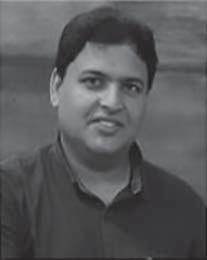
DeepakGuptaisaneminentacademician;hehas variousrolesandresponsibilitiesjugglinghistime betweenlectures,research,publications,consultancy,communityservice,PhDandpost-doctorate supervisionetc.With12yearsofrichexpertise inteachingandtwoyearsinindustry;hefocuses onrationalandpracticallearning.Hehascontributedsubstantialliteratureinthefieldsof Human–ComputerInteraction,IntelligentData Analysis,Nature-InspiredComputing,Machine LearningandSoftComputing.Heisworkingas anAssistantProfessoratMaharajaAgrasenInstituteofTechnology(GGSIPU), Delhi,India.HehasservedasEditor-in-Chief,GuestEditor,AssociateEditorin SCIandvariousotherreputedjournals(Elsevier,Springer,Wiley&MDPI).Hehas activelybeeninvolvedintheorganizationofvariouswellreputedInternational conferences.Heisnotonlybackedwithastrongreputationbuthisinnovative ideas,end-resultsofhisresearchandimplementationoftechnologyinthe medicalfieldissignificantlycontributingtosociety.HeiscurrentlyaPost-Doc researcheratUniversityofValladolid,Spain.HehascompletedhisPost-Docfrom Inatel,Brazil,andPh.D.fromDr.APJAbdulKalamTechnicalUniversity.Hehas authored/edited33bookspublishedinternationally(Elsevier,Springer,Wiley, Katson).Hehaspublished103scientificresearchworksinreputedInternational JournalsandConferencesincluding50SCIIndexedJournalsoftheIEEE, Elsevier,Springer,Wileyandmanymore.Hehasalsopublishedonepatent.He isEditor-in-ChiefoftheOAjournal ComputersandQuantumComputingand Applications (QCAA),AssociateEditorof ExpertSystems (Wiley),Intelligent DecisionTechnologies(IOSPress), JournalofComputationalandTheoretical Nenoscience,HonoraryEditorofICSES TransactionsonImageProcessingand PatternRecognition.HeisalsoaserieseditorofIntelligent BiomedicalData
Analysis DeGruyter(Germany),serieseditorof SmartSensorTechnologiesfor BiomedicalEngineering withElsevier.HeisalsoassociatedwithvariousprofessionalbodiessuchasISTE,IAENG,IACSIT,SCIEI,ICSES,UACEE,Internet Society,SMEI,IAOP,andIAOIP.InvitedasaFacultyResourcePerson/Session Chair/Reviewer/TPCmemberindifferentFDP,conferencesandjournals.Heis theconvenerofthe‘ICICC’and‘ICDAM’springerconferenceseries.
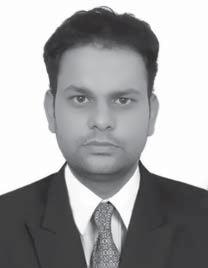
AdityaKhampariaisaneminentacademician;he hasvariousrolesandresponsibilitiesincludinglectures,research,publications,consultancy,communityserviceandPhDsupervisionetc.Withseven yearsofrichexpertiseinteachingandtwoyearsin industry;hefocusesonindividualcentricandpracticallearning.Currently,heisworkingasAssociate ProfessorofComputerScienceandEngineeringat LovelyProfessionalUniversity,Punjab,India.His researchareasareMachineLearning,SoftComputing,EducationalTechnologies,IoT,SemanticWeb andOntologies.Hehaspublishedmorethan50scientificresearchpublicationsinreputedInternational/NationalJournalsandConferences,whichare indexedinvariousinternationaldatabases.InvitedasaFacultyResourcePerson/SessionChair/Reviewer/TPCmemberindifferentFDP,conferencesandjournals.Dr.Adityareceivedresearchexcellenceawardin2016,2017,2018and 2019atLovelyProfessionalUniversityforhisresearchcontributionduringthe academicyear.HeismemberofCSI,IET,ISTE,IAENG,ACMandIACSIT. Heisalsoactingasreviewerandmemberofvariousrenownednationaland internationalconferences/journals.InvitedasaFacultyResourcePerson/Session Chair/Reviewer/TPCmemberindifferentFDP,conferencesandjournals.
ListofContributors
IqrarAhmad Departmentofinformationsystem CommunityCollege
KingKhalidUniversityMuhayel KingdomofSaudiArabia
NazirAhmad Departmentofinformationsystem CommunityCollege KingKhalidUniversityMuhayel KingdomofSaudiArabia
AfrojAlam DepartmentofComputerScience IntegralUniversity Lucknow India
PallaviAsthana AmityUniversity UttarPradesh
India
S.Aswath DepartmentofComputerScience PESUniversity Bangalore,560008
India
SubratoBharati DepartmentofEEE RanadaPrasadShahaUniversity Narayanganj-1400 Bangladesh
NaveenKumarBhati SunderDeepCollegeofEngineering andTechnology UttarPradeshTechnicalUniversity
India
HatimM.ElhassanIbrahimDafallaa Departmentofinformationsystem CommunityCollege KingKhalidUniversityMuhayel KingdomofSaudiArabia
CharuGandhi DepartmentofComputerScience
JIIT
Noida India
xx ListofContributors
AartiGoel DepartmentofInformation Technology
NetajiSubhasUniversityof Technology
NewDelhi
India
SoniaGoel PunjabiUniversityPatiala
AnjaliGoyal DepartmentofComputerApplications
GNIMT
Ludhiana
Punjab India
SoniaGoyal DepartmentofElectronicsand CommunicationEngineering
PunjabiUniversityPatiala
AdnanHasanovi ´ c UniversityofNoviPazar 36300NoviPazar
DimitrijaTucovicabb
Serbia
BramahHazela AmityUniversity
UttarPradesh
India
NaiyarIqbal DepartmentofComputerScience andIT MaulanaAzadNationalUrdu University
Hyderabad
Isha AssociateProfessor LovelyProfessionalUniversity
Punjab
India
MariaJamal DepartmentofMathematics
BirlaInstituteofTechnology
India
BalwinderKaur SchoolofComputerScienceand Engineering LovelyProfessionalUniversity
Phagwara
India
InderpreetKaur ReseachScholar CUGharaun Dept.ofComputerApplications CGClandran
PrabjotKaur DepartmentofMathematics
BirlaInstituteofTechnology
India
RanjitKaur DepartmentofElectronicsand CommunicationEngineering PunjabiUniversityPatiala
ShwetaKaushik DepartmentofComputerScience Engineering
ABESInstituteofTechnology
NewDelhi
India
JaitegSinghKhaira Dept.ofComputerApplications ChitkaraUniversity PunjabCampus
AdityaKhamparia SchoolofComputerScienceand Engineering
LovelyProfessionalUniversity Phagwara Punjab and SchoolofComputerScienceand Engineering
LovelyProfessionalUniversity Punjab India
Rizwankhan Al-BarkaatCollegeofGraduate Studies
Aligarh India
AnilKumar AmityUniversity UttarPradesh India
PriyankaRajanKumar PunjabiUniversityPatiala
VijayLaxmi Professor GuruKashiUniversity Punjab India
ListofContributors
ZoranLonˇcarevi ´ c ITS-StudiesforInformation Technologies 11000Belgrade Savskinasip7
Serbia
ArunMalik AssociateProfessor
LovelyProfessionalUniversity Punjab India
PragunMangla DepartmentofElectronicsand Communication
NetajiSubhasInstituteofTechnology NewDelhi India
AshishMishra GyanGangaInstituteofTechnology Jabalpur
MadhyaPradesh
India
BhabaniShankarPrasadMishra SchoolofComputerEngineering KIITUniversity Bhubaneswar Odisha
SubhashreeMishra SchoolofElectronicsEngineering KIITUniversity Bhubaneswar Odisha
xxii ListofContributors
SumitaMishra AmityUniversity
UttarPradesh
India
SatinderSinghMohar DepartmentofElectronicsand CommunicationEngineering PunjabiUniversityPatiala
M.RubaiyatHossainMondal InstituteofICT
BangladeshUniversityofEngineering andTechnology Dhaka
Bangladesh RajitNair JagranLakecityUniversity
Nikita SchoolofEngineering&Technology CTUniversity
Ludhiana
India
PriyankaPattnaik SchoolofComputerEngineering KIITUniversity Bhubaneswar
Odisha
MuraliMallikarjunaRaoPerumalla SchoolofComputerScienceand Engineering
LovelyProfessionalUniversity Phagwara
Punjab
PrajoyPodder InstituteofICT
BangladeshUniversityofEngineering andTechnology
Dhaka
Bangladesh SaharQazi DepartmentofComputerScience
JamiaMilliaIslamia NewDelhi
MamoonRashid AssistantProfessor SchoolofComputerScienceand Engineering
LovelyProfessionalUniversity Jalandhar
India
KhalidRaza DepartmentofComputerScience JamiaMilliaIslamia
NewDelhi
MohammedBurhanurRehman Departmentofinformationsystem CommunityCollege
KingKhalidUniversityMuhayel KingdomofSaudiArabia
MdRobiulAlamRobel DepartmentofCSE CumillaUniversity Cumilla
Bangladesh
HarshSadawarti SchoolofEngineering&Technology CTUniversity
Ludhiana
India
KamaljitSinghSaini Dept.ofComputerApplications ChandigarhUniversity Gharuan
MuzaferSaraˇcevi ´ c UniversityofNoviPazar 36300NoviPazar
DimitrijaTucovicabb
Serbia
DeepakKumarSharma DepartmentofInformation Technology NetajiSubhasUniversityof Technology
NewDelhi
India
PreetiSharma BansalCollegeofEngineering
DileepKumarSingh
JagranLakecityUniversity
HarjitSingh ResearchScholar GuruKashiUniversity
Punjab
India
JaitegSingh ChitkaraUniversityInstituteof EngineeringandTechnology
ChitkaraUniversity 140401Punjab
Rajpura
India
ListofContributors
SanjayKumarSingh SchoolofComputerScienceand Engineering LovelyProfessionalUniversity Phagwara
Punjab
SaravjeetSingh ChitkaraUniversityInstituteof EngineeringandTechnology ChitkaraUniversity 140401Punjab
Rajpura
India
JimmySingla SchoolofComputerScienceand Engineering LovelyProfessionalUniversity Phagwara
India
SoniaSingla UniversityofLeicester U.K.
Sofia ResearchScholar LovelyProfessionalUniversity
Punjab
India
NatashaTiwari UniversityofOxford
UK
UmerIqbalWani AssistantProfessor SchoolofComputerScienceand Engineering LovelyProfessionalUniversity Jalandhar
India
Preface
Thisbookfocusesonrecentadvances,rolesandbenefitsoffog,edge,andpervasivecomputingforintelligentandsmartInternetofThings(IoT)enabledapplications,aimedatnarrowingtheincreasinggap.Thisbookaimstodescribethe differenttechniquesofintelligentsystemsfromapracticalpointofview:solvingcommonlifeproblems.Butthisbookalsobringsavaluablepointofview toengineersandbusinessmen,tryingtosolvepractical,economical,ortechnical problemsinthefieldoftheircompanyactivitiesorexpertise.Thepurelypractical approachhelpstotransmittheideaandtheaimoftheauthoristocommunicate thewaytoapproachandtocopewithproblemsthatwouldbeintractableinany otherway.Thisbooksolicitscontributionswhichincludetheory,applications,and designmethodsofintelligentsystems,Ubiquitoustechniques,trendsoffog,edge, andcloudapplicationsasembeddedinthefieldsofengineering,computerscience, mathematics,andlifesciences,aswellasthemethodologiesbehindthem.
BookObjectives
Withtherapidgrowthandemergingdevelopmentinartificialtechnology,novel hybridandintelligentIoT,edge,fogdriven,andpervasivecomputingtechniques areanimportantpartofourdailylives.Thesetechnologiesareutilizedinvarious engineering,industrial,smartfarming,videosecuritysurveillance,VANETs andvisionaugmenteddrivenapplications.Theseapplicationsrequiredrealtime processingofassociateddataandworkontheprincipleofcomputationalresource orientedmetaheuristicandmachinelearningalgorithms.Duetophysicalsize limitations,smallcomputingIoTandmobiledevicesarehavingresourcelimited constraintswithlowcomputingpowerandareunabletomanagegoodqualityof serviceandrelatedparametersfordistinguishedapplications.Toovercomethe limitationsofsuchmobiledevicesedge/fogandpervasivecomputinghavebeen proposedasapromisingresearchareatocarryouthighendinfrastructureusage andprovidecomputation,storageandtaskexecutioneffectivelyforenddevice
users.Asedge/fogcomputingisimplementedatnetworkedges,itpromiseslow latencyaswellasagilecomputationaugmentingservicesfordeviceusers.To successfullysupportintelligentIoTapplications,therefore,thereisasignificant needfor(1)exploringtheefficientdeploymentofedge/fog/pervasivecomputing servicesatthenetworknodeslevel,(2)identifyingthenovelalgorithmrelated tofog/edge/pervasivecomputingforresourceallocationwithlowconstraint andpowerusage,and(3)designingcollaborativeanddistributedarchitectures specializedforedge/fog/pervasivecomputing.
TargetAudience
Thetargetaudienceofbookisprofessionalsandpractitionersinthefieldofintelligentsystem,edgecomputingandcloudenabledapplicationsandubiquitouscomputingscienceparadigmmaybenefitdirectlyfromothers’experiences.Graduate andmasterstudentsoffinalprojectsandparticularcoursesinintelligentsystem, edgeandfogbasedreal-lifeapplicationsormedicaldomaincantakeadvantage, makingthebookinterestingforengineeringandmedicaluniversityteachingpurposes.Theresearchcommunityofintelligentsystems,sensorapplicationsand intelligentsensor-basedapplications,consistingofmanyconferences,workshops, journalsandotherbooks,willtakethisasareferencebook.
Organization
Chapter1describestheInternetofThings,fog,edgeandpervasivecomputingare emergingtechnologies,havingseveralpromisingapplicationsincludinghealthcare.Thesetechnologiesarewitnessingaparadigmshiftinthehealthcaresector movingoutfromtraditionalwaysofvisitinghospitals.Itconnectsthedoctors, patients,andnursesthroughsmartintelligentsensordevicesatlowcostwithhigh bandwidthnetwork.Inthischapter,authorsdiscussednewcomputingparadigms preciselyandpresenttheirapplicationsinubiquitoushealthcare.Thischapteralso coversvariousproblemsandchallengesthathavebeenfacedbythepractitioners inthelastfewyearsinthefieldofcloudcomputingandIoTthathasbeensolved byfog,edgeandpervasivecomputing.
Chapter2discussesdifficultiesandfutureheadingstoinvestigatetherole offog,edgeandpervasivecomputing.Studieshaverevealedthatfog/edge computing(FEC)basedorganizationscanexpectanessentialactivityinexpandingthecloudbymeansoffinishinggo-betweenorganizationsattheedgeof theframework.Dimness/edgecomputing-basedIoT’s(FECIoT)appropriated configurationoverhaulsorganizationprovisioningalongthecloud-to-things
continuum,thusmakingitsensibleforkeyapplications.Edgeandfogregistering arefirmlyrelated–bothalludetothecapacitytoprocessinformationcloserto therequester/buyertolessenidlenesscostandincrementclientexperience.Both canchannelinformationbeforeit εhitsε amajorinformationlakeforfurther utilization,lesseningthemeasureofinformationthatshouldbehandled.
Chapter3addressesthetechniqueselectionissueencounteredduringthe requirementselicitationstage,throughaproposedmachinelearningmodelto transfertheexperts’knowledgeofelicitationtechniqueselectiontothelessexperienced.Basedonthesystemanalysts,stakeholdersautomatevarioustechniques toprovidethebestoptimizationtechniquenomination.
Chapter4coverstheadvantagesanddisadvantagesofusingmachinelearning inedge/fog/pervasivecomputing.Thevariousstudiescarriedoutbyresearchersis alsocovered.Everyfieldhasnumerousapplications,andinthischapterwediscuss afewpossibleapplicationsinthisfogerausingmachinelearningtechniques.By theendofthechapteryoushouldknowaboutMLframeworksandthevarious machinelearningalgorithmsusedforfog/edgecomputing.
Chapter5providesadescriptionofthesoftwarewhichhasthreemodules:student,librarianandadmin.Thesemoduleshaveuniquefeaturesforsearchingfor librarybookswiththetitle,author’sname,subject,ISBN/ISSN,etc.Withinthe chaptertheinterfacesofthesoftwareareshownasimageswhichisanabstraction thatmaybedevelopedonavailablemobileoperatingsystemlikeiOS,Android,etc. Theinterfacesaredesignedbearinginmindthatitwillbeusedoncrossplatform environmentsfulfillingminimumrequirementsusingtheIoTavailableinthemarket.Furthermore,overallinformationispreservedwiththehelpofcloudstoragewhilekeepingparalleloptionsforphysicalstorageonthedestinationmaster computer.Thecloud-basedsystemhasgivenlibrarymanagementanewdimensionwhilegivinganewfeaturereferredas εmanagementonthegoε asawebor abstractGUI.
Chapter6describesasystematicreviewthatwasconductedtodetermine workdonebyvariouspublishersonkidneycancerandtospottheresearchgaps betweenthestudiessofar.Theoutcomeofthisstudypermittedtheeffective diagnoseofkidneycancerorrenalcancercarriedoutusinganadaptiveneuro fuzzymethodwith94%accuracy.Although,manydataminingtechniqueswere appliedbyresearchers,theaccuracyofthesemethodswaslessthantheadaptive neurofuzzymethod.Thismethodisworthwhiletoidentifythediagnosisofrenal cancerbetterandmorerigorously.
Chapter7explainsaproposedapproachtouseedgecomputinginatransportationandroute-findingprocessinordertohandleperformanceissues. Hugedemandforcentralizedcloudcomputingposesseverechallengessuchas degradedspectralefficiency,highlatency,poorconnection,andsecurityissues.To handletheseissues,fogcomputingandedgecomputinghascomeintoexistence.
Oneapplicationofcloudcomputingislocationbasedservices(LBS).Intelligent transportsystemsbeingtheimportantapplicationofLBSrelyonGPS,sensors, andspatialdatabasesforconvenienttransportfacilities.Theselocation-based applicationsarehighlydependentonexternalsystemslikeGPSdevicesand mapAPI’s(cloudsupport)forthespatialdataandlocationinformation.These applicationsacquirespatialdatausingAPI’sfromdifferentproprietaryservice providers.ThedependencyontheAPI’sandGPSdevices,createchallengesfor effectivefleetmanagementandroutingprocessindeadzones.Deadzonesare areaswherenocellularcoverageexists.
Chapter8describesthesimulationanddesignofanoptimizedlow-costcomb drivebasedacousticMEMSsensor.Thesesensorswouldbeusefulforcondition monitoringofautomobilesonthebasisofchangesinsoundwavesemergingfrom malfunctioningordefectivepartsofautomobiles.Thesesensorscanbedeveloped fromsiliconsubstrates.SimulationisdoneusingCOMSOLMultiphysicssimulationsoftwarebasedonfiniteelementanalysis.Thisoptimizedsensorissensitive forthefrequencyrangeof30–300Hz.Thisfrequencyrangewasobtainedafterthe FFTanalysisofvarioussignalsreceivedfromenginesusingMATLABsoftware.
Chapter9offersanoutlineofdevelopingtheInternetofThings(IoT)technology intheareaofhealthcareasaflourishingresearchandexperimentaltrendatthe presenttime.Themainadvantagesandbenefitsareconsideredinthischapter. Inrecenttimes,severalstudiesinthehealthcareinformationsystemproposed thatthedisintegrationofhealthinformationisoneofthemostsignificantchallengesinthearrangementofpatientmedicalrecords.Asaresult,inthischapter, weprovideandetaileddesignandoverviewofIoThealthcaresystemsalongwith itsarchitecture.
Chapter10presentsthecombinationofVANETandfogcomputingofferinga rangeofoptionsforcloudcomputingapplicationsandfacilities.Fogcomputing dealswithhigh-virtualizedVANETsoftwareandcommunicationsystems,where dynamic-speedvehiclestravel.MobileAdhocNetoworksmayalsorequire low-latencyfogcomputinginVANETandlocalconnectionswithinshortdistances.ThemodernstateoftheworkandupcomingviewpointsofVANETfog computingareexploredinthischapter.Inaddition,thischapteroutlinesthe featuresoffogcomputingandfog-basedservicesforVANETs.Inadditionto this,fogandcloudcomputing-basedtechnologyapplicationsinVANETare discussed.Somepossibilitiesforchallengesandissuesassociatedconnectedwith fogcomputingarealsodiscussedinthischapter.
Chapter11outlinesanideatodesignanefficientdatacollectionmethodin theIoTnetwork.IoTtechnologydealswithsmartdevicestocollectdataaswell astoprovideusefulandaccuratedatatousers.Manydatacollectionmethods alreadyexist,buttheystillhavesomedrawbacksandneedmoreenhancements.
ThischapteroutlinesdetailedinformationaboutthedesignofanoveldatacollectionmethodusingfogcomputingintheIoTnetwork.Themainreasonforusing fogcomputingoverthecloudcomputingistoprovidesecuritytodatawhichis completelylackingincloudcomputing.Now-a-days,securityofdataisoneofthe mostimportantrequirements.
Chapter12providesanoverviewofusingafogcomputingplatformforanalyzingdatageneratedbyIoTdevices.Afogcomputingplatformwillbecompared withstate-of-the-arttodifferentiateitsimpactintermsofanalytics.Lotsofdatais beinggeneratedinIoTbaseddevicesusedinsmarthomes,trafficsensors,smart cities,andvariousconnectedappliances.Fogcomputingisoneareawhichisquite popularinprocessingthishugeamountofIoTdata.However,therearechallenges inthesemodelsforperformingrealtimeanalyticsinsuchdataforquickanalytics andinsights.Afoganalyticspipelineisonesuchareawhichcouldbeapossible solutiontoaddressthesechallenges.
Chapter13proposesamethodofdiagnosisbasedontherelationshipbetween patientsandsymptoms,andbetweensymptomsanddiagnosisusinglinguistic variablesbyintuitionisticfuzzysets.Itthendescribesthestateofsomepatients afterknowingtheresultsoftheirmedicaltestsbydegreeofmembershipand degreeofnon-membershipbasedontherelationshipbetweenpatientsand symptoms,andsymptomsanddiagnosis.Lateramax-min-max compositionandformulaisappliedtocalculatetheHammingdistancetoidentifythediseasewiththeleastHammingdistanceforvariouspatients.Arevised max-minaveragecompositionisappliedtoidentifythediseasewiththemaximum score.Finally,itshowshowurethralstrictureinvariouspatientsismathematically diagnosed.
Chapter14discussesthetypesofattacksinvolvedintheIoTnetworkwiththeir countermeasures,alsocoveringthedifferentlayers,protocols,andthesecurity challengesrelatedtotheIoT.ItisthecapabilityofthedevicethatmakestheIoT brilliantandthishasbeenachievedbyplacingtheintelligenceintothedevices. Theintelligenceinthesensorsisdevelopedbyaddingsensorsandactuatorswhich cancollectinformationandpassittothecloudthroughWi-Fi,Bluetooth,ZigBee, andsoon.ButtheseIoTnetworkarevulnerabletodifferenttypesofattack:physical,network,software,andencryption,andtheseattacksactuallystoptheIoT devicesperformingtheirnormaloperations.So,itrequiredthatwemustovercome theseattacks.
Chapter15discussesthedomainofIoTintegratedtelehealthortelemedical serviceswithvarioussegmentswherethereisaneedtoworkonadvancedtechnologiestoachieveahigherdegreeofaccuracyandperformance.Asshownbythe researchreportsandanalyticsfromAlliedMarketResearch,theglobalvalueand marketoftheIoTintelehealthandmedicalserviceswillexceed13billiondollars. FromtheextractsofStatista,theStatisticalResearchPortalthehugeusageofIoT
baseddeploymentsisquiteprominentandisincreasingveryfrequentlybecauseof theusagepatternsinvariousdomains.Inanotherresearchreport,theusagepatternsoftabletsinvariouslocationsfrom2014to2019showsthatthefiguresare growing.Becauseofthesedata,itisnecessarytoenforcethesecuritymechanisms fortheIoTandwirelessbasedenvironment.
Chapter16exploresoptimizationintheIoTwhichisusedtoimprovethe performanceofnetworkbyenhancingtheefficiencyofthenetwork,reducing theoverheadsandenergyconsumption,andincreasingtherateofdeployment ofvariousdevicesintheIoT.TheapplicationsofIoTaresmartcities,augmented maps,IoTinhealthcareetc.andvariousissuesinIoTsuchassecurity,addressing schemesetc.arediscussed.Variousoptimizationtechniquessuchasheuristic andbio-inspiredalgorithms,evolutionaryalgorithms,andtheirapplicabilityin IoTaredescribed.Furtherthefruitflyoptimizationalgorithm(FOA)andflow chartofFOAisexploredindetail.FinallytheapplicationsofFOAinIoTand nodedeploymentusingFOAareexplained.OnthebasisofobservationFOAcan beusedtoincreasethecoveragerateofsensornodes.
Chapter17chapterpresentsanoverallandin-depthstudyofdifferentoptimizationalgorithmsinspiredfromnature’sbehaviour.Todayoptimizationisapowerful toolfortheengineerinvirtuallyeverydiscipline.Itprovidesarigorous,systematicmethodforrapidlyzeroinginonthemostinnovative,cost-effectivesolutions tosomeoftoday’smostchallengingengineeringdesignproblems.TheIoTisthe conceptofconnectingeverydaydevicestotheinternetallowingthedevicesto sendandreceivedata.WiththeIoT,devicescanconstantlyreporttheirstatus toareceivingcomputerthatusesinformationtooptimizedecisionmaking.IoT networkoptimizationmanybenefitsforimprovingtrafficmanagement,operatingefficiency,energyconservation,reductioninlatency,higherthroughput,and fasterratesinscalingupordeployingIoTservicesanddevicesinthenetwork.
Chapter18outlinestheoptimizationtechniquesforintelligentIoTapplications intransportprocesses.Thetravellingsalesmanproblem(TSP)hasanimportant roleinoperationalresearchandinthiscase,itwasimplementedinthedesign oftheIoTapplication.Thechapterdescribessomespecificmethodsofsolving, analysingandimplementingapossiblesolutionwithanemphasisonatechnique basedongeneticalgorithms.InthischapterweconnecttheTSPoptimization problemintransportandtrafficwithIoT-enabledapplicationsforasmartcity.In theexperimentalpartofthechapterwepresentspecificdevelopmentandimplementationoftheapplicationforTSPwithtestingandexperimentalresults.
Chapter19describestheimpactoftheInternetofeverythingsolutionswhichare connectingeveryobject.Thishasgeneratedalargeamountofdata.Thisamount ofdatacannotbeprocessedbyacentralizedcloudenvironment.Thereareapplicationswheredataneedsrealtimeresponseandlowlatency.Thedatabeingsentto thecloudforprocessingandthencomingbacktotheapplicationgeneratingdata
canseriouslyimpacttheperformance.Thisdelaycancausedelayindecisionmakingandthisisnotacceptableinrealtimeapplications.Tohandlesuchscenarios, fogcomputinghasemergedasasolution.Fogcomputingextendsthecloudnear totheedgeofthenetworktodecreaselatencyaswellasbandwidthrequirements. Itactsasanintermediatelayerbetweenthecloudanddevicesgeneratingdata.
Chapter20isconcernedwithsecurityandprivacyhandlingissuesoccurredin pervasiveandedgeboundarysystemforrecognizingvoice,soundusingintelligent IoTminingtechniques.Fogcomputingisapromisingregisteringworldviewthat extendsdistributedcomputingtotheedgeofsystems.Likedistributedcomputing yetwithuniquequalities,fogcomputingfacesnewsecuritychallengesotherthan thoseacquiredfromdistributedcomputing.Thischapterstudiesexistingwriting onfogfiguringapplicationstorecognizebasicsecurityholes.Comparableinnovationslikeedgefiguring,cloudlets,andmicro-serverfarmshaveadditionallybeen incorporatedtogiveanall-encompassingsurveyprocess.
Chapter21focusesonfogcomputingandthesecondsectiondealswithedge computing.Inthistheauthorfirstintroducesthebasicsoffogandedgecomputing, itsarchitecture,working,advantagesandusecases,andthenprimarilyfocuses ontheirsecurityandprivacyissuesseparately.Intheendsolutionsandresearch opportunitiesinbothfieldsarediscussed.
ClosingRemarks
Inconclusion,wewouldliketosumupherewithfewlines.Thisbookisasmall steptowardstheenhancementofacademicresearchthroughmotivatingthe researchcommunityandresearchorganizationstothinkabouttheimpactoffog, edgeandIoTcomputingframeworks,networkingprinciplesanditsapplications foraugmentingtheacademicresearch.Thisbookisgivinginsightonthevarious aspectsofacademiccomputingresearchandtheneedforknowledgesharing andpredictionofrelationshipsthroughseverallinksandtheirusages.This includesresearchstudies,experiments,andliteraturereviewsaboutpervasive, fogcomputationalactivitiesandtodisseminatecutting-edgeresearchresults, highlightresearchchallengesandopenissues,andpromotefurtherresearch interestandactivitiesinidentifyingmissinglinksincloudcomputing.Wehope thatresearchscholars,educationalistsandstudentsalikewillfindsignificancein thisbookandcontinuetouseittoexpandtheirperspectivesinthefieldofedge, fogandpervasivecomputinganditsfuturechallenges.
